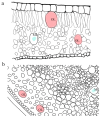An Updated Review on Essential Oils from Lauraceae Plants: Chemical Composition and Genetic Characteristics of Biosynthesis
- PMID: 40565154
- PMCID: PMC12192576
- DOI: 10.3390/ijms26125690
An Updated Review on Essential Oils from Lauraceae Plants: Chemical Composition and Genetic Characteristics of Biosynthesis
Abstract
Globally, plant-derived natural products such as essential oils serve as primary sources of functional substances for spices, pharmaceuticals, and other applications. With the increasing focus on health and well-being, alongside ongoing public health challenges, there is a critical need to enhance the deep utilization of natural plant products. Lauraceae family essential oils, characterized by their aromatic, volatile properties and notable biological activities (e.g., antibacterial, antioxidant, insect-repellent), hold significant application value across fragrance, cosmetics, chemical industries, biological pesticides, and medicine. Integrating multi-disciplinary data from biology, genomics, metabolomics, and related fields can accelerate comprehensive insights into the biosynthesis mechanisms and functional roles of these essential oils, thereby promoting the development and application of Lauraceae natural products. This review systematically summarizes the accumulation patterns and compositional characteristics of essential oils across diverse genera of Lauraceae. It further explores the evolutionary dynamics of terpene synthase (TPS) gene families and key genes involved in terpenoid biosynthesis pathways, leveraging genomic datasets from Lauraceae species. Finally, the review highlights future research trends for optimizing Lauraceae essential oil resource utilization and advancing molecular breeding of high-oil-content species within the family.
Keywords: biosynthesis; genome; oil cell; terpene; terpene synthases; useful plant species.
Conflict of interest statement
The authors declare no conflicts of interest.
Figures





Similar articles
-
Essential Oils from Annonaceae Species from Brazil: A Systematic Review of Their Phytochemistry, and Biological Activities.Int J Mol Sci. 2021 Nov 9;22(22):12140. doi: 10.3390/ijms222212140. Int J Mol Sci. 2021. PMID: 34830022 Free PMC article.
-
Identification and Functional Analysis of the Fragrance Terpene Synthase Gene PpTPS5 in Pyrethrum parthenium.Physiol Plant. 2025 Jul-Aug;177(4):e70333. doi: 10.1111/ppl.70333. Physiol Plant. 2025. PMID: 40583775
-
Genomic analysis of terpene synthase family and characterization of ent-kaurene synthase in Chenopodium quinoa.Mol Genet Genomics. 2025 Jun 30;300(1):66. doi: 10.1007/s00438-025-02269-z. Mol Genet Genomics. 2025. PMID: 40583067
-
Integrated platform for structural and functional analysis of terpene synthases of Cannabis sativa.PeerJ. 2025 Jul 10;13:e19723. doi: 10.7717/peerj.19723. eCollection 2025. PeerJ. 2025. PMID: 40656959 Free PMC article.
-
Unlocking the potential of essential oils in aromatic plants: a guide to recovery, modern innovations, regulation and AI integration.Planta. 2025 May 25;262(1):6. doi: 10.1007/s00425-025-04724-y. Planta. 2025. PMID: 40413718 Free PMC article. Review.
References
-
- Figueiredo A.C., Barroso J.G., Pedro L.G., Scheffer J.J.C. Factors Affecting Secondary Metabolite Production in Plants: Volatile Components and Essential Oils. Flavour Fragr. J. 2008;23:213–226. doi: 10.1002/ffj.1875. - DOI
-
- Almeida K.C.R., Silva B.B., Alves C.C.F., Vieira T.M., Crotti A.E.M., Souza J.M., Martins C.H.G., Ribeiro A.B., Squarisi I.S., Tavares D.C., et al. Biological Properties and Chemical Composition of Essential Oil from Nectandra megapotamica (Spreng.) Mez. Leaves (Lauraceae) Nat. Prod. Res. 2020;34:3149–3153. doi: 10.1080/14786419.2019.1608539. - DOI - PubMed
-
- Du Y., Wang Y., Xue W., Fan Y., Jiang Z. Research progress of essential oils from Lauraceae plants. Food Sci. 2023;44:346–359. doi: 10.7506/spkx1002-6630-20220613-129. - DOI
-
- Camargo M.J.D., Miranda M.L.D., Kagamida C.M., Rodrigues E.D., Garcez F.R., Garcez W.S. Sesquiterpenos de Ocotea Lancifolia (Lauraceae) Quím. Nova. 2013;36:1008–1013. doi: 10.1590/S0100-40422013000700015. - DOI
Publication types
MeSH terms
Substances
Grants and funding
LinkOut - more resources
Full Text Sources

